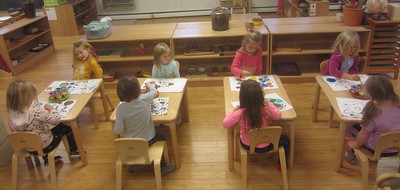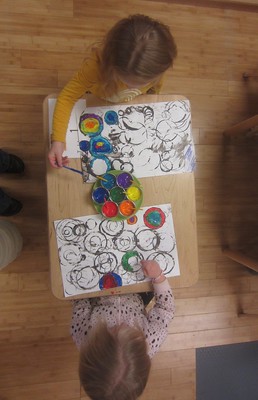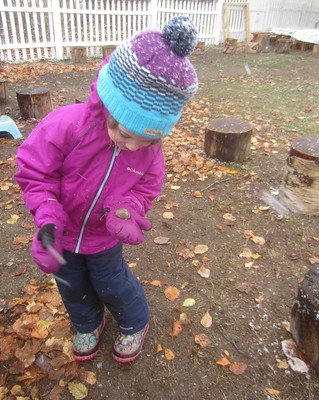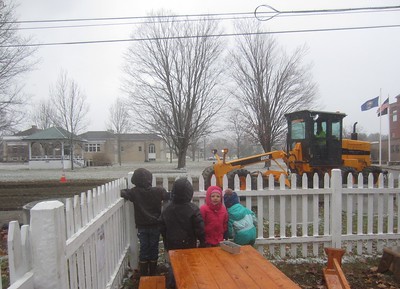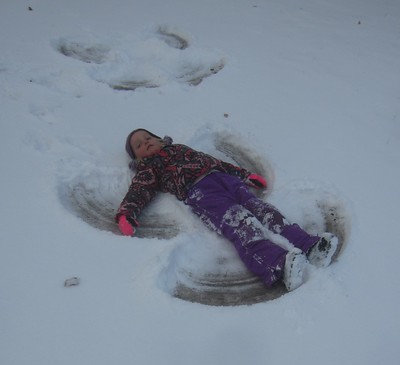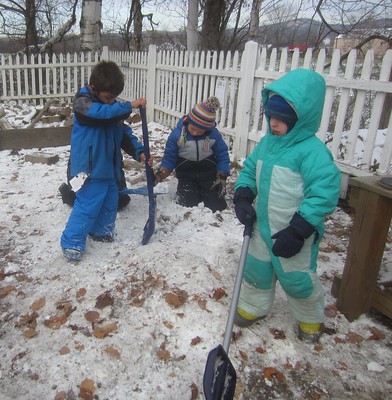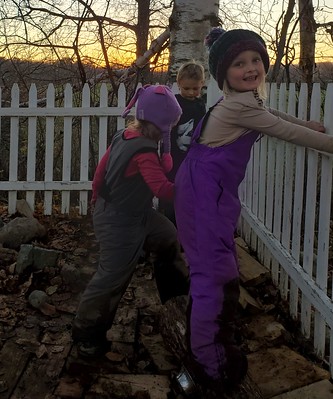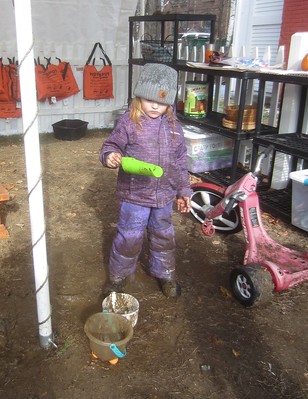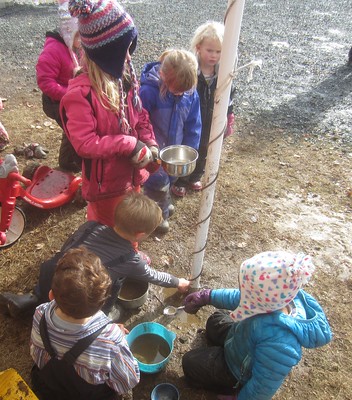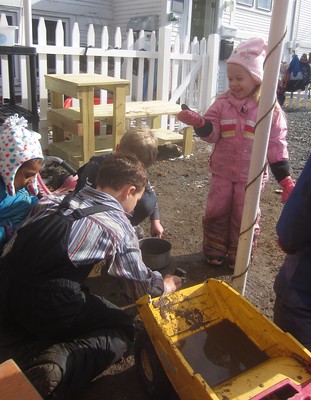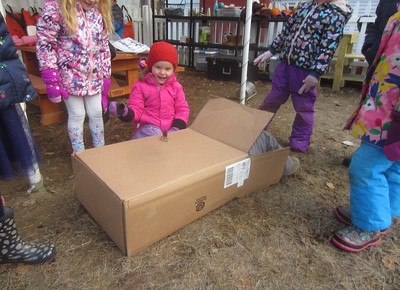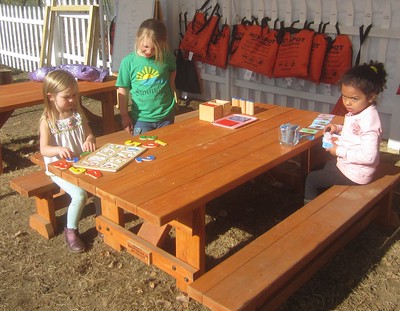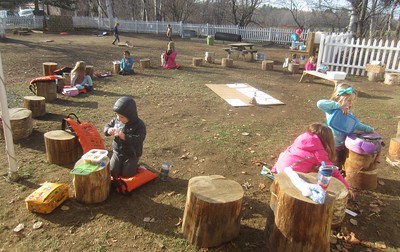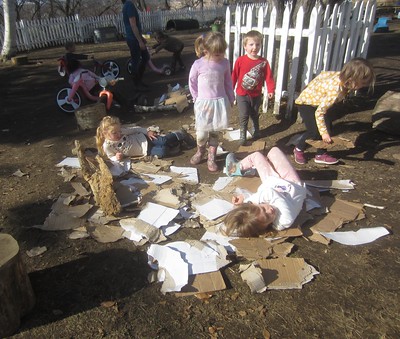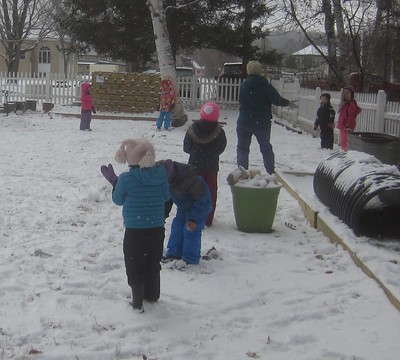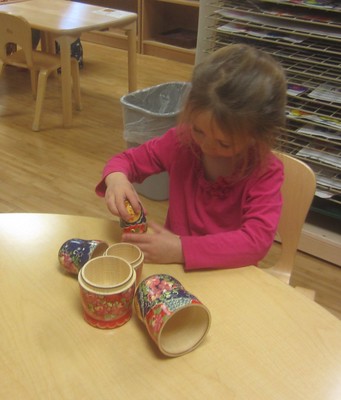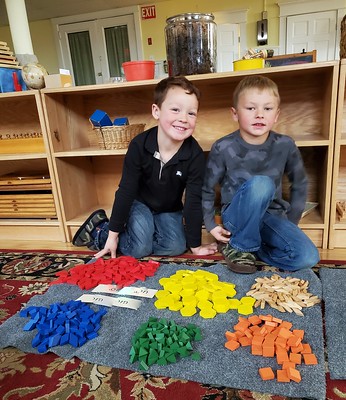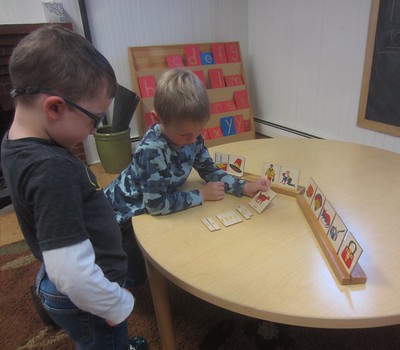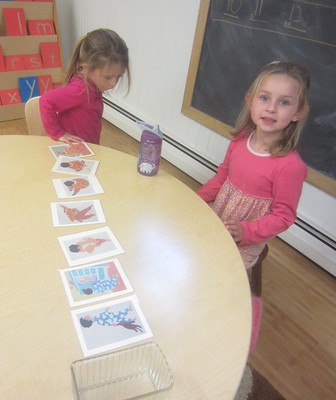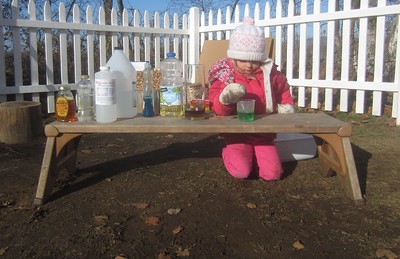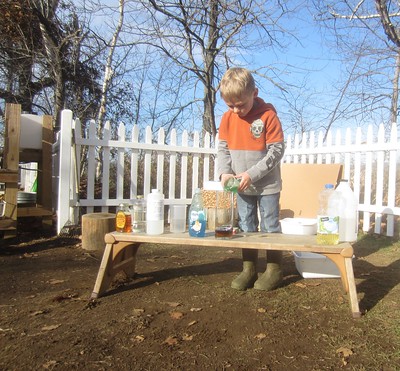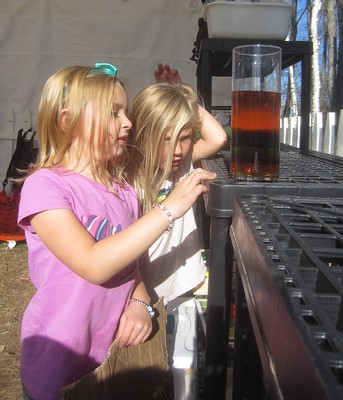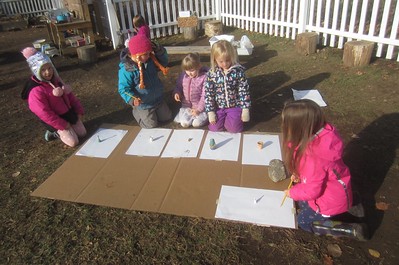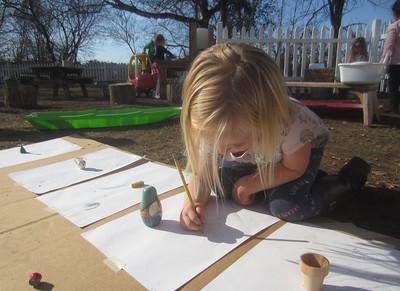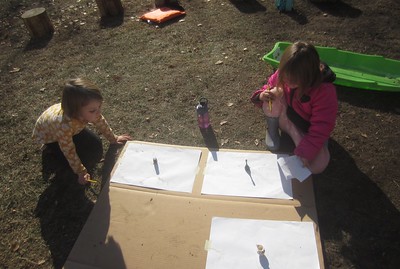On Monday we read Swatch, the Girl Who Loved Color before using lots of bright paints to fill in our black circle outlines in the style of Wassily Kandinsky. They are truly beautiful works of art!
The cold temperatures brought our first snowfall that stuck and the children had a glorious time making angels, snow piles, snowballs, roads and pathways, and having snowball battles. We reviewed the expectations for snowball throwing with those who wanted to throw snow: 1. always ask before throwing snow at someone and wait for their response, 2. if they say yes to a snowball battle, they get to throw snow back at you, and 3. we aim for the legs and body. The children did well following the expectations when they knew what they were. The snow only lasted a couple of days before the temperatures moved up into the 60’s and we had some unseasonably warm T-shirt weather, which we took full advantage of!
In an effort to teach a bit about social distancing to avoid spreading germs, Susan introduced a game of germ ball. Everyone got a “germ” ball, and we stood at our stumps. When she said sneeze or cough, we handed our germs to the person on the left. We then moved out into a bigger circle, where the people next to us were too far away to reach, so we tossed the germs to the next person. Only some of the people caught the germs. We then made our circle even bigger, and only 1 or 2 people caught the germs.
We introduced the story of Stone Soup, a story of giving, gratitude, and community, which is an annual Sunnybrook tradition during the month of November. We first read the version by Marcia Brown from 1948 about three hungry soldiers coming home from war who enter a small town searching for food and lodging. All the peasants say they have no food to share, so the soldiers go about making stone soup to share with the community, and in their curiosity, the peasants offer ingredients for the soup until it is fit for a king. The villagers and soldiers then dine together, enjoying the food and company, before the villagers invite them into their homes for the night. We read a few other versions, including Some Friends to Feed by Pete Seeger, and the version by Jon J. Muth about three monks who visit a village and they demonstrate how happiness comes from kindness, generosity, and spending time together. We discussed the elements of a story, including setting, characters, emotions, challenges, and resolution. We began writing our own stone soup story. The setting will be the forest, and the characters woodland creatures. We will develop more details and get ready to finalize it next week so we can illustrate it the following week.
During sign language with Rose we continued to practice our letters, the signs we have learned so far, and signing the alphabet songs and Skidamarink. Rose signed the letters and when the first letter in someone’s name was signed, those children stood up. We reviewed the teacher name signs, then all the boys in the class were given name signs. Each of their signs is formed by using the first letter of their first name to make the “boy” sign, so if the child’s name starts with T, his name sign is the letter T up by the side of the forehead. In two weeks, the girls will get their name signs.
Kindergarten students continued to practice building numbers using Cuisenaire rods, finding counting patterns, and working with letter sounds.
We celebrated a golden birthday with our newest 6 year old. As she walked the globe around the sun 6 times, we listed the seasons and counted the years until she turned 6. We read a beautiful book that she donated to the school about a girl who’s mother makes her a dress, and the girl and the dress do everything together. One day after they have traveled across the ocean on a big ship, they are separated and the dress travels on, locked in a trunk, “looking” for the girl and meeting many new people in the process. Many years later, when the girl is a mother to her own daughter, she spots the dress in a shop window and they are reunited.
For Friday science we continued our study of the water cycle and liquids. We read Rivers of Sunlight: How the Sun Moves Water Around the Earth by Molly Bang. We then discussed how liquids vary in their density, how closely their molecules are packed. We can see this with how they move. Liquids with a higher density flow much more slowly, and those that are less dense slosh and splash and move much more quickly. We watched and compared several different liquids to see which were slower, more dense, and faster, less dense. We ordered them, then poured them into a cylinder in layers, creating a stack of liquids that float on each other. In watching them move in their containers, we decided honey was the most dense, so we poured that in first. We then added corn syrup, which we colored purple, then vegetable glycerin that we colored green, blue dish soap, red water, orange oil, and finally isopropyl alcohol.
Some students have been curious about shadows, so students who were interested selected a small object and taped it to a piece of paper, then traced its’ shadow. They traced the shadow at 9:15, then each hour following, observing how the position, size, and direction changed as the sun moved. We noticed that the shadows moved from left to right and became shorter as the time approached noon, then lengthened again as the time passed noon.


